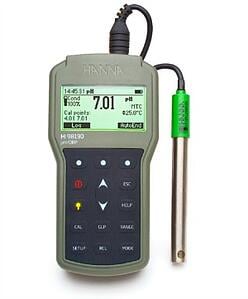
Urban areas tend to have large amounts of impervious surfaces, resulting in large volumes of runoff. As stormwater flows over these impervious surfaces, chemicals, pollutants, debris, and sediment are gathered. This pollutant and nutrient-rich stormwater ultimately drains into sewers, where it continues to a wastewater plant for treatment or into a natural water body such as rivers, lakes, wetlands, and estuaries.
Rainfall events and the associated stormwater can cause surface water pollution and is therefore monitored and regulated.
In the United States, sampling and testing requirements differ based on the location of runoff. For example, industrial facilities are federally regulated and required to have a treatment and analysis plan for storms producing 0.1 inches of accumulation after a 72-hour dry period. Construction site water runoff is not federally regulated but subject to local regulation.
Stormwater from Construction Sites
Most local authorities dictate that stormwater leaving a construction site must be within a pH range of 6.5 to 8.5.
The pH of the stormwater is typically measured at the point of discharge to the waterway or at the point that it leaves the construction site. Measurement can be performed either directly in the flow or storm water or in a sample that has been collected in a bottle.
When a pH reading is outside this range, treatment is required. Additionally, the onsite source of pollution must be identified and remedied. At construction sites, pollutants can come from a variety of sources.
Best management practices (BMPs) such as silt fences, retention ponds, and hay bales are often utilized to catch and filter stormwater runoff, but damaged silt fences or high sediment build up reduce the efficiency of BMPs.
A Construction Company's Challenge
A construction company contacted Hanna Instruments about an instrument to measure the pH of their stormwater onsite.
The customer needed to measure heavy metals and pH in their stormwater runoff for their local permit. They currently sent samples to a lab for analysis. However, the pH measurements had to be reported within 12 hours of the rainfall event. The lab results were not always back in time, and the tests were expensive.
The construction company specializes in pre-planned neighborhoods and therefore works with large amounts of concrete. The customer was required to report their stormwater pH as concrete is strongly alkaline can strongly influence stormwater pH if the proper BMPs are not in place.The customer needed a rugged meter that came with a carrying case for easy field use.
Hanna's Recommendation
Hanna Instruments' support team recommended the Professional Waterproof Portable pH/ORP Meter - HI98190.
 Waterproof and rugged
Waterproof and rugged
The customer appreciated that the HI98190 was waterproof and came supplied with the Titanium Body pH Electrode for Wastewater - HI12963. The durability of both the meter and electrode, along with the rugged carrying case, gave the customer peace of mind that the equipment would have a long lifespan, even when used in stormy conditions.
Accurate with data logging
The CAL Check™ feature of the HI98190 allowed the customer to view and report when the meter was last calibrated to ensure compliance in their pH reporting. The log-on-demand feature allowed the customer to log the pH reading, date, and time of each measurement for ease of reporting later.
The HI98190 provided the customer a convenient and valuable solution for their pH measurement needs.
Video: HI98190 and HI98191 Waterproof Portable Meters (5 minutes)
As a leader in innovation Hanna Instruments developed the HALO Wireless pH Meter, which uses Bluetooth Smart Technology to connect to Apple and Android devices running the Hanna Lab App.
Continuing with this tradition, the Hanna Instruments Blog is devoted to sharing the latest in product overviews, how-to guides, and industry specific news to our ever-growing audience.
Contact us at sales@hannainst.com.